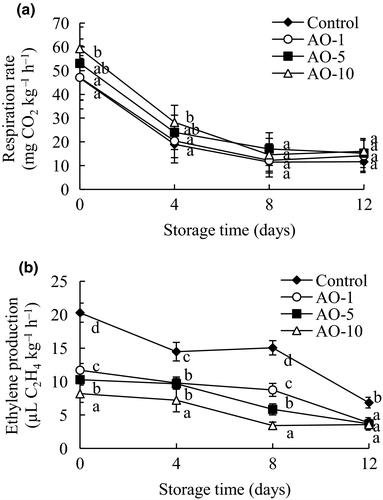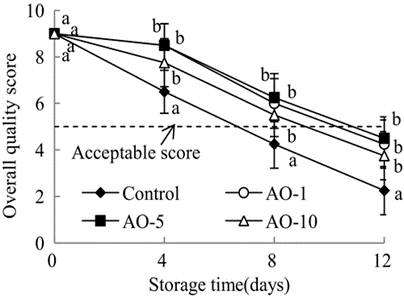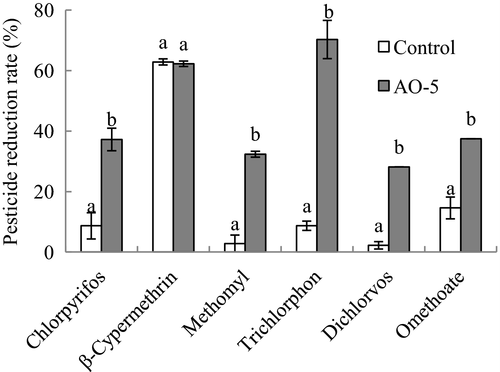April 23, 2021 at 12:24 am | Updated April 23, 2021 at 12:24 am | 7 min read
Cabbage suffers a reduction in quality due to cut processing as a result of tissue damage and microbial infections. In a search for alternatives to chemical disinfectants, a team of Chinese biotechnologists tested a protocol for aqueous ozone use, as its effectiveness is species-specific. Simple handheld devices for respiration and ethylene measurement helped in narrowing down the choices for the best treatment.
Problems with Cut Leafy Vegetables
The World Health Organization recommends that each person consumes 400 grams of vegetables and fruits daily. Businesses have been quick to take advantage of the growing demand by offering cleaned and even cut produce to make fresh fruits and vegetables convenient.
However processing fruits and vegetables, such as cabbage, can hurt quality. There is damage to cells, loss of nutrients at the wound site, and risk of microbial infection. This can be seen in browning of the surface, development of unpleasant odor, and change in texture. Moreover, pesticide residues on fresh produce can pose a significant health risk.
Subscribe to the Felix instruments Weekly article series.
By submitting this form, you are consenting to receive marketing emails from: . You can revoke your consent to receive emails at any time by using the SafeUnsubscribe® link, found at the bottom of every email. Emails are serviced by Constant Contact
Cleaning fresh produce with chemicals to prevent microbial growth can add to the undesirable chemical load on the product. Therefore, countries throughout the world have begun banning many chemical disinfectants for use in food. For example, chlorine, a common disinfectant, has been shown to be carcinogenic.
People need a non-chemical disinfectant. Both the food industry and academia have been working on this challenge together to find a solution.
Aqueous ozone has been tested on fruits and vegetables and was found to reduce microbial numbers. The advantage of using ozone is that it can be used in small quantities and is just as effective as standard chemical disinfectants. It also does not negatively impact cut fresh produce quality. Ozone also breaks down into oxygen and leaves no residue on fresh produce, making it safe for use in food.
A team of Chinese biotechnologists, Chen, Jiang, Zhang, Zhao, and Hu, decided to investigate the effects of aqueous ozone as a disinfectant for cabbage (Brassica oleracea L.), which is a nutritional and popular leafy vegetable.
The biotechnologists had to find the right period and concentrations of aqueous ozone, as the treatment is vegetable specific. Using higher doses and treating for longer periods can spoil fresh produce. Therefore, research is needed to establish the threshold of aqueous ozone concentrations and time, as well as the effects it has on the chemical, sensory, and nutritional quality of cabbage.
The scientists also wanted to check if aqueous ozone could reduce pesticide residues from cut cabbage, as it did in other fresh produce.
Testing Aqueous Ozone

Figure 1: “Aqueous ozone inactivation efficacy against bacteria (A), coliforms (B), yeasts (C), and molds (D) on fresh‐cut cabbages during 12 days of storage (◆, Control; ○, AO‐1; ■, AO‐5; △, AO‐10),” Liu et al, 2020. (Image credits: https://doi.org/10.1002/fsn3.1870)
Good quality cabbages with similar weight and size were taken from a single farm. The outermost leaves were removed, and the leafy vegetable was cleaned thoroughly and then cut into strips of 1×5 cm. The cut cabbages were randomly divided into four groups, for three treatments and one batch as the control.
The biotechnologists washed cut cabbage with low concentrations of 1.4 mg/L of aqueous ozone for 1, 5, and 10 minutes at 4°C. These were labeled AO‐1, AO‐5, and AO‐10, respectively. The control batch was washed only in distilled water for 5 minutes.
From each treatment, 80 grams was taken and dried, packed with cling film, and stored for 12 days at 4 ± 1°C and 90% relative humidity. The samples were taken for testing on 0, 4, 8, and 12 days.
On the four days of testing, the biotechnologists examined samples for microbial counts. To check the quality, they estimated weight loss, total phenol and antioxidant content, color, taste, aroma, and texture.
They also tested respiration rate and ethylene (C2H4). To test respiration, the scientists decided to measure carbon dioxide levels (CO2). Both the gases were measured by using headspace analysis. They needed a device that could preferably measure both gases simultaneously, and the F-940 Store It! Gas Analyzer could do this rapidly and accurately with high resolution.
The scientists took 55 grams of cabbage strips and kept them in sealed containers for one hour at 4 ± 1°C. CO2 and ethylene that accumulated in the headspace was evaluated using the gas analyzer, produced by Felix Instruments Applied Food Science.
Aqueous ozone’s effect was tested against commercial pesticides, such as chlorpyrifos, β‐cypermethrin, trichlorfon, methomyl, dichlorvos, and omethoate, by treating another set of cabbage.
Leaves were soaked for 10 minutes, dried, and kept in a refrigerator for 12 hours. The cabbage was cut into 1×5 cm strips, which were divided into two groups. One was the control and the second group was treated with 1.4 mg/L aqueous ozone for 5 minutes. Both batches were tested for pesticide levels.
Aqueous Ozone Controls Microbial Infection
The biotechnologists found that, though aerobic bacteria, molds, coliform, and yeast increased in all treatments, the aqueous ozone was an effective disinfectant, as it suppressed the counts of all the microbes.
Increasing the duration of treatment was effective in delaying the start of the growth of coliforms and molds. In the case of molds, the infection did not appear in 10-minute treatments at all during the entire 12 day experiment; see Figure 1. AO‐10 reduced counts of all the groups of microbes, significantly compared to the 1-minute and 5-minute treatments of cut cabbage.

Figure 2: “Effects of aqueous ozone treatment on respiration rates (A) and ethylene production (B) of fresh‐cut cabbages during 12 days of storage (◆, Control; ○, AO‐1; ■, AO‐5; △, AO‐10),” Liu et al, 2020. (Image credits: https://doi.org/10.1002/fsn3.1870)
Aqueous ozone, however, does seem to initially stress the cut cabbages, since the respiration rates recorded were higher than in control on the first day of the experiment. As storage time increases, the respiratory rate of treated samples comes down and is similar to control; see Figure 2.
Ethylene production was the highest on day 0, in all groups, and decreased gradually in time, as shown in Figure 2. However, all treated cut cabbages showed significantly less ethylene than the control. The scientists think this is because ozone acts as an oxidizing agent and deactivates enzymes involved in ethylene production, reducing the synthesis of the gas.

Figure 3: “Effects of aqueous ozone treatment on the overall quality of fresh‐cut cabbages during 12 days of storage (◆, Control; ○, AO‐1; ■, AO‐5; △, AO‐10),” Liu et al, 2020. (Image credits: https://doi.org/10.1002/fsn3.1870).
Improved Quality of Cut Cabbage
Overall, aqueous ozone improves the quality of cut and packed cabbage. Though browning increased over time, especially between the 4th and 8th day, ozone treatment reduced browning.
The sensory quality improved significantly due to ozone treatment. The disinfectant delayed deterioration of quality by four days. While the control batch showed below-acceptable quality on the 8th day, it took 12 days for treated batches to reach the same decrease in quality. The five-minute treatment showed the best results; see Figure 3.
Usually, weight loss occurs due to damage caused by microbial infection. Interestingly, the ozone treatment produced a higher weight loss compared to the control group, even though the microbes were reduced. This could be due to tissue damage by ozone through oxidation. Moreover, the initial increase in respiration, which ozone produces in the cut cabbage, can also lead to a breakdown of carbohydrates and weight loss.
The total phenol and antioxidant content initially increases and then decreases over time up to 12 days. Once again, the oxidation activity of ozone is understood to be the reason.
Aqueous Ozone Treatments Remove Pesticides

Figure 4: “Effects of aqueous ozone treatment on removal of chlorpyrifos, β‐cypermethrin, trichlorfon, methomyl, dichlorvos, and omethoate residues in fresh‐cut cabbages,” Liu et al, 2020. (Image credits: https://doi.org/10.1002/fsn3.1870)
The biotechnologists found that a 5-minute treatment of aqueous ozone could remove all pesticides tested, except for 1β‐cypermethrin; see Figure 4. The treatment removed 28.13 to 37.50% of the other four pesticides, whereas washing cleaned only 2.21 to 14.58% of pesticides in untreated cut cabbages.
Ozones’ strong oxidation property helps it break up the bonds that hold the chemicals in the pesticides to smaller compounds. Since these compounds can be sometimes more toxic than pesticides, the scientists felt justified in limiting their recommendation to only a 5-minute treatment with aqueous ozone to show its effectiveness in removing pesticides.
Choosing the Best Treatment
Of the nineteen pesticides used to grow leafy vegetables, the scientists tested the six most common ones used in cabbage, so the study has significant and wide practical applications. Though the ten-minute aqueous ozone treatment was the most effective in controlling microbe counts, it was the 5-minute treatment that the biotechnologist chose as the best option, as they produced cut cabbages of the best quality. Moreover, treatment beyond this duration could produce toxic byproducts from pesticide breakdown. Since the treatment is tested for industrial application, shorter durations of treatments can also cut processing time, making the entire process more profitable.
This study is an example of need-based research that is attempting to solve problems faced by the public and food industry. The genius of the study is that it seeks to replace harmful chemical disinfectants with aqueous ozone that is not only effective in controlling microbial infections but also removes pesticide residues from food. This type of research has the potential to make food, as well as the environment, safer, while retaining much-needed efficiencies of industry. Improving the quality of cut cabbage will reduce food loss, and contribute to a reduction in climate change, making agriculture more sustainable.
—
Vijayalaxmi Kinhal
Science Writer, CID Bio-Science
Ph.D. Ecology and Environmental Science, B.Sc Agriculture
Feature photo courtesy of Immo Wegmann
Sources
Increasing fruit and vegetable consumption to reduce the risk of noncommunicable diseases. (2019, February 11). Retrieved April 14, 2021, from https://www.who.int/elena/titles/fruit_vegetables_ncds/en/
Liu, C., Chen, C., Jiang, A., Zhang, Y., Zhao, Q., & Hu, W. (2020). Effects of aqueous ozone treatment on microbial growth, quality, and pesticide residue of fresh‐cut cabbage. Food Science & Nutrition, 9(1), 52-61. doi:10.1002/fsn3.1870
Related Products
- F-751 Grape Quality Meter
- Custom Model Building
- F-901 AccuStore
- F-751 Melon Quality Meter
- F-751 Kiwifruit Quality Meter
- F-750 Produce Quality Meter
- F-751 Avocado Quality Meter
- F-751 Mango Quality Meter
- F-900 Portable Ethylene Analyzer
- F-950 Three Gas Analyzer
- F-920 Check It! Gas Analyzer
- F-960 Ripen It! Gas Analyzer
- F-940 Store It! Gas Analyzer
Most Popular Articles
- Spectrophotometry in 2023
- The Importance of Food Quality Testing
- NIR Applications in Agriculture – Everything…
- The 5 Most Important Parameters in Produce Quality Control
- Melon Fruit: Quality, Production & Physiology
- Fruit Respiration Impact on Fruit Quality
- Guide to Fresh Fruit Quality Control
- Liquid Spectrophotometry & Food Industry Applications
- Ethylene (C2H4) – Ripening, Crops & Agriculture
- Active Packaging: What it is and why it’s important






